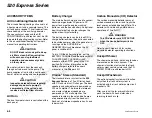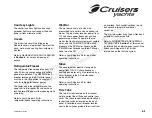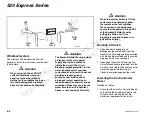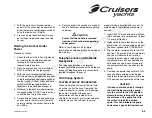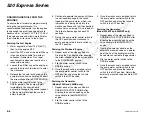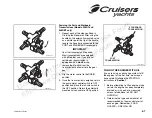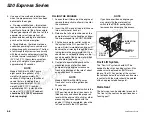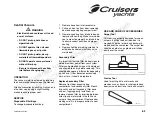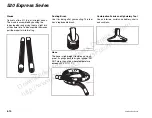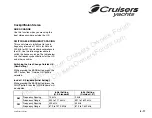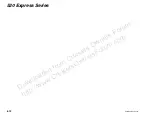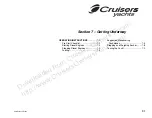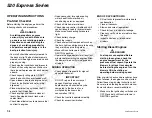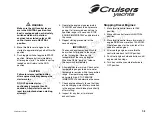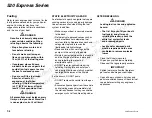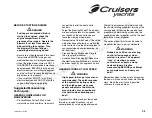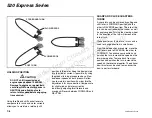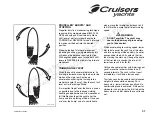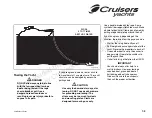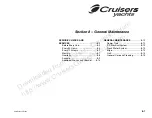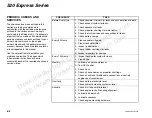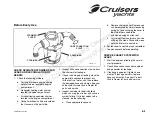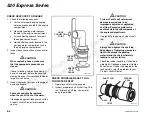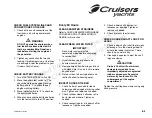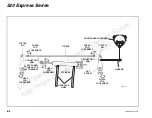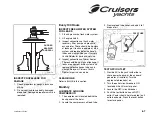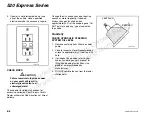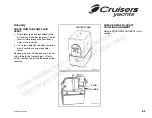
7-4
520 Express Series
520 Express Series
Fueling
Refer to your engine owner’s manual for the
fuel type recommended for your particular
engine. Your dealer may have fuel
suggestions relative to climate conditions
and the use of your boat.
DANGER
Gasoline is extremely dangerous
under certain conditions. When
refueling, observe the following:
• Stop all engines, motors and
fans before refueling.
• Do not smoke or allow open
flames or sparks nearby, within
15 m (50 ft.), of the fueling area.
• If equipped, close all doors,
windows, hatches and ports that
could allow fuel vapors to enter
the boat's enclosed spaces.
• Do not overfill the fuel tanks.
Allow for at least a 2%
expansion of fuel when
refueling. If the fuel temperature
is 0°C (32ºF) or lower, allow at
least 6% for expansion of fuel.
DANGER
All precautions must be taken every
time you fuel your boat. Diesel fuel
is non-explosive, but it will burn!
STATIC ELECTRICITY HAZARD
An electrostatic spark can ignite fuel vapors
causing serious injury and property damage.
Use extreme caution when filling the fuel
system. In addition:
• Make sure your boat is securely moored
to the dock.
• Refuel only at approved venues such as
marina fuel docks or automotive fuel
service stations. Approved venues have
safeguards in place to lessen the
likelihood of static discharge.
• Read and follow ALL warnings on the
pump or in the vicinity of the pump.
• Maintain contact between the fuel nozzle
and the fill pipe at all times, before and
during refueling, to prevent an
electrostatic spark.
• DO NOT re-enter your vehicle during
refueling. Getting into and out of your
vehicle might build up a static charge that
could ignite the fumes at the fill pipe.
If a fire occurs, DO NOT panic.
• DO NOT remove the nozzle from the gas
tank.
• Evacuate all passengers from the vehicle
and refueling area and immediately tell
the station attendant so they can use the
emergency shut-off and fire extinguisher.
AFTER REFUELING
DANGER
Leaking fuel is a fire and explosion
hazard.
• The first time you fill your boat’s
fuel tank(s) and after each
refueling thereafter; check the
entire fuel system for leaks
and/or damaged parts.
• Leaks and/or damaged parts
must be repaired and the area
ventilated to remove explosive
fumes.
• Close the fill cap(s) securely.
• Wipe up any spilled fuel completely.
Dispose of the rags properly onshore.
IMPORTANT
Spilled fuel may yellow the fiberglass
gel coat and damage accent tapes.
• Open all doors, windows, hatches and
ports to ventilate all spaces. Check for fuel
vapors before starting any engines or
appliances.
Downloaded
from
Cruisers
Owners
Forum
http://www.CruisersOwnersForum.com

